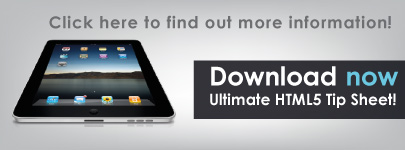 It’s a fact that the number of mobile devices is increasing exponentially. Basically, these are becoming the primary device used by everyone today. We have to be realistic: smartphone’s, PDA’s and tablets are replacing desktops and laptops, not only while working from home, but even in the office.
It’s a fact that the number of mobile devices is increasing exponentially. Basically, these are becoming the primary device used by everyone today. We have to be realistic: smartphone’s, PDA’s and tablets are replacing desktops and laptops, not only while working from home, but even in the office.
Organizational changes occur faster today than it ever has; due to this, companies need to react and adapt to stay ahead. Traditional learning methods are not enough when thinking about this. As a company, you should start thinking about whether or not you want or need to adopt mobile technology. It goes beyond the training aspect of mobile devices: it’s about how learning can have a prominent role when highlighting its ability of using a technology that will improve the company’s productivity and efficiency.
Here we provide you with a series of questions you should evaluate and think about before going for mobile learning:
-
Where and when are learners learning?
You need to think about the context or location in which the device will be used by the learners. The identification of learning contexts and activities appropriate to mobile technologies is one of the first things you should consider. Mobile devices are characterized by their portability and availability: are accessible anywhere the user is located. Even better, HTML5 technology offers you major interaction and multimedia support. Therefore, it becomes the perfect combination: interactivity and multimedia, whenever and wherever the user is.
If many of your learners spend significant amount of time out of the office, implementing HTML5 technology in your training becomes critical. They will be able to watch videos or hear podcasts while traveling for example.
-
What is the learner learning? Which type of content or information am I transmitting to the learners?
It is very important you previously evaluate if the material or content you have available is for use on the go, and likely to be required at the point of need. Ask yourself: Is it necessary for this particular piece of learning to be mobile?
It really becomes helpful if you want to deliver content just-in-time. For example, on-job training material, checklists, forms, etc.
To successfully launch into the realm of HTML5 for training and learning, you should previously have a clear vision of the role content design plays in facilitating learning. By implementing appealing ways to organize the different types of content, you will definitely be able to ensure users get the best use of these dynamic devices.
Tip: the types of content that best adapt to mobile learning should have low information density.
-
How is the learner learning?
Think if content needs to be deployed across multiple devices or is a single device option the best choice? Think about how deploying content on all platforms including PC’s, smartphones, tablets, of different resolutions will benefit your company. Again, analyze your audience, and define how are they learning and interacting with content. If the mayority of your learners have potential for completing content via ipad or another mobile device, it would definetly make sense to move into HTML5.
Usually, companies these days want their content compatible with all platforms. With HTML5 you develop once, and can deploy almost everywhere. You don’t need to create one version, in a specific language, for Windows, another for Mac, another one for iOS, and yet another for Android (and that’s only four of the myriad of platforms out there). You develop using HTML5, and most modern platforms will be able to run your content as-is.
Conclusion
Basically, your decision is going to rely on your audience and the type of devices that they are going to use for their training. It’s essential to consider the context of the learner and the form of the content that is going to be taught.
Knowing your learning audience is the first step when deciding if you need to develop your courses with an HTML5 platform. But there's certainly many other factors that you could analyze.




